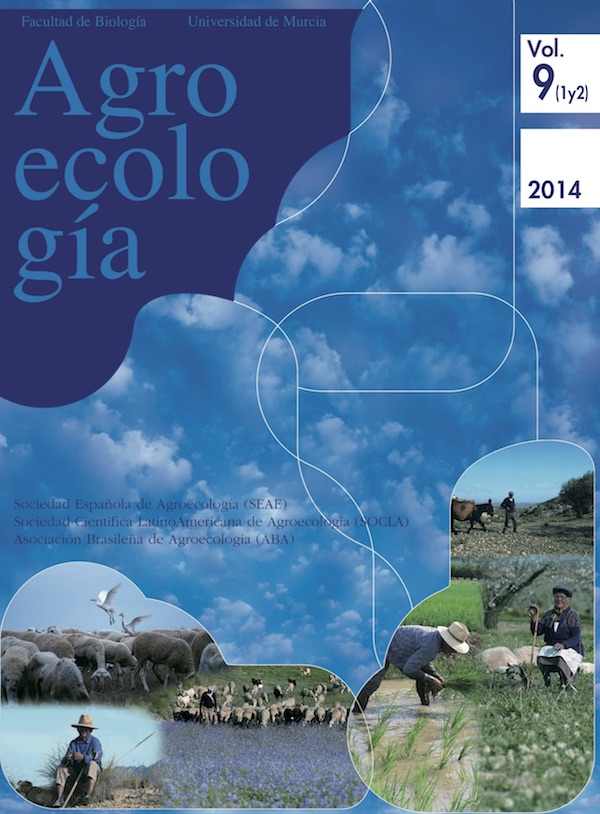Los ecosistemas no bailan sobre la punta de un alfiler: consecuencias del espacio en el manejo ecológico de plagas
Resumen
Ramón Margalef advirtió la necesidad de incluir el espacio en las metáforas utilizadas para comprender los ecosistemas. Más recientemente, John Vandermeer e Ivette Perfecto hicieron un llamado similar pensando en agroecosistemas. En este trabajo se muestran algunos posibles efectos del espacio sobre el Manejo Ecológico de Plagas (MEP). Para esto evaluamos modelos teóricos que simulan redes de interacciones ecológicas en agroecosistemas utilizando ecuaciones tipo Lotka-Volterra Generalizadas, en donde se incluye o no el espacio. En primer lugar evaluamos (con base en información de campo) la posibilidad de persistencia de agroecosistemas que simulan sistemas tradicionales de cultivo y monocultivos. Posteriormente estudiamos sistemas agrícolas hipotéticos. Como resultado obtuvimos que: 1) Para el caso de los sistemas reales, sólo los tradicionales son persistentes; 2) En los sistemas hipotéticos se observó la extinción de especies, aunque esta fue marcadamente menor cuando se tomó en cuenta el espacio. Los resultados de esta investigación sugieren que los monocultivos son inherentemente no persistentes. En ellos se evidenció un rápido incremento en las densidades de algunas especies, seguido del colapso total del sistema. Por su parte, en los sistemas tradicionales se presentaron oscilaciones acotadas en las densidades. Es sabido que el conocimiento agrícola tradicional se encuentra amenazado y que en muchos lugares ha desaparecido, cuando éste es el caso, los sistemas hipotéticos sugieren que para el establecimiento de comunidades ecológicas complejas (necesarias en el MEP) es indispensable la interacción de varios agroecosistemas. Bajo estas circunstancias, el éxito del MEP depende de una propiedad emergente a escala meta-comunitaria. Esta situación puede estar determinada por la participación de más de un predio agrícola en el MEP. En este último caso, la posibilidad del realizar un MEP exitoso, puede ser entendida como una situación de manejo de un bien común.
Descargas
Las obras que se publican en esta revista están sujetas a los siguientes términos:
1. El Servicio de Publicaciones de la Universidad de Murcia (la editorial) conserva los derechos patrimoniales (copyright) de las obras publicadas, y favorece y permite la reutilización de las mismas bajo la licencia de uso indicada en el punto 2.
2. Las obras se publican en la edición electrónica de la revista bajo una licencia Creative Commons Reconocimiento-NoComercial-SinObraDerivada 3.0 España (texto legal). Se pueden copiar, usar, difundir, transmitir y exponer públicamente, siempre que: i) se cite la autoría y la fuente original de su publicación (revista, editorial y URL de la obra); ii) no se usen para fines comerciales; iii) se mencione la existencia y especificaciones de esta licencia de uso.
3. Condiciones de auto-archivo. Se permite y se anima a los autores a difundir electrónicamente las versiones pre-print (versión antes de ser evaluada) y/o post-print (versión evaluada y aceptada para su publicación) de sus obras antes de su publicación, ya que favorece su circulación y difusión más temprana y con ello un posible aumento en su citación y alcance entre la comunidad académica. Color RoMEO: verde.





